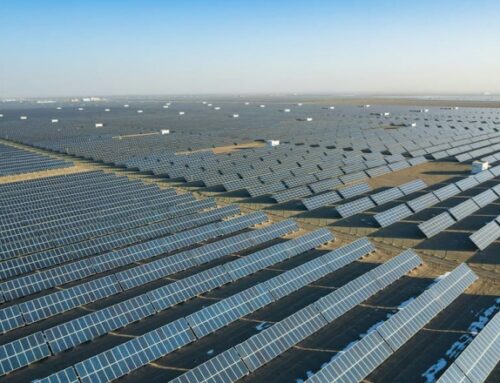Debate on energy and environment obliterated by power line controversy in 2024
December 31, 2024
The planet’s getting warmer, energy demands are greater, the sources of electricity are less abundant than they once were, and the cost of addressing these interrelated crises is rising exponentially.
But as Maryland policymakers deliberated potential solutions to these challenges throughout 2024, they became distracted by a proposal that nobody knew was coming until the middle of the year.
No energy and climate issue produced more fury in the state this year than a proposal to build a new high-voltage electric transmission line through three Maryland counties — largely to provide more power to energy-hogging data centers in Northern Virginia.
Without much warning to Maryland policymakers or everyday citizens, PJM, the regional electric grid operator, hired a New Jersey energy company, PSEG, to plan and build the transmission lines, which would run from a nuclear power plant in Pennsylvania through Baltimore, Carroll and Frederick counties and to a power station in Frederick. Eventually, much of the juice would then travel under the Potomac River to Ashburn, Virginia, home to the world’s highest concentration of data centers, which help power the internet and fledgling AI technologies.
News of the proposed line, called the Maryland Piedmont Reliability Project, first circulated early in the summer and created an immediate freakout among political leaders and property owners.
“This 70-mile, 500,000-volt proposal from New Jersey based companies will have a substantial, direct impact on Marylanders across our state,” state Del. Nino Mangione (R-Baltimore County) said this summer, about a month after PJM’s plan became public. “Residents have been blindsided by attempts to rush this project through and they are entitled to transparency.”
State panel votes to study, rather than recommend, ways to pay for climate plan
Before the proposal was even formally submitted to the Maryland Public Service Commission, which regulates utilities, residents and political leaders spent the summer and fall mobilizing against the power line.
Land owners worried about a government taking of their property — or fretted that their property values would diminish from unsightly, intrusive, electric power lines. Farmers suggested that their livelihoods and rural lifestyle would be jeopardized. Other advocates warned of environmental and public health impacts from the massive project.
The cries about possible property takings were the most emotional. Yet in a way, the controversy over the Maryland Piedmont Reliability Project neatly encapsulates the current debate over energy and climate in the state.
Maryland has strict mandates for combating climate change, laid out in 2022 legislation, but the solutions will cost billions of dollars. These goals are forcing the shutdown of fossil fuel-powered electricity plants at a time when the demand for energy is greater than ever, thanks in part to the proliferation of data centers.
Gov. Wes Moore (D) wants Maryland to become a major player in the data center industry, and a 2,100-acre data center campus is under development in Frederick County. At the same time, the dwindling energy supply is driving up utility costs for electric consumers.
How can policymakers reconcile these priorities?
“We have a great opportunity, but we have risks as well,” state Sen. Karen Lewis Young (D-Frederick), said at the Maryland Association of Counties convention in December. “Our challenge is to achieve a balance.”
Young, who serves on the Senate Committee on Education, Energy and the Environment, was one of just three lawmakers in Annapolis who voted against legislation from the administration that will make it easier to bring data centers to Maryland. She plans to introduce a bill in the 2025 General Assembly that would call for an independent study of data centers — their economic and environmental impact in the state, and an estimate of the energy they’ll need to operate.
The most recent study on the potential for data centers in Maryland was conducted last year by the Maryland Tech Council, an enthusiastic supporter for data center expansion in the state.
When it came to addressing energy use and how to pay for climate initiatives, Maryland policymakers did not get very far in 2024, punting on several proposals in the General Assembly that would have raised revenues for climate programs, and promising more study in the months ahead.
These same topics are likely to dominate the legislative discussion on energy and the environment again in 2025. Part of the coming debate will be over how to unleash clean energy sources in the years ahead. Expect nuclear power to be a major part of the discussion.
As for the Maryland Piedmont Reliability Project — PSEG had yet to submit its formal proposal to the Public Service Commission as of late December. Whenever that happens, a long and winding (and wonky) approval process will begin.
Search
RECENT PRESS RELEASES
Related Post


